The research paper published by IJSER journal is about Evaluation of Treatment’s Performance through Stochastic Model for Unorganized Drug Administrations 1
ISSN 2229-5518
Evaluation of Treatment’s Performance through Stochastic Model for Unorganized Drug Administrations
P. Tirupathi Rao, D. Flora Evangil, P. Rajasekhara Reddy
ABSTRACT
Drug administration through non-competent methods is more prevalent in most of the unprivileged social and economic groups. Random picking of drug without verifying the suitability and administering the same as a part of the treatment leads to so many health complications. Hence, there is a need of the attention on evaluation of the drug performance on the specific disease, where the drug is administered either by individual choice or by the advice of non- competent medical supervisors. In this paper, we have developed a stochastic model to study the effectiveness of the drug by developing stochastic processes in trinomial experimental situation. The possibilities of drug effectiveness are categorized into three ways with different probabilities. Probability distribution for positive and negative impacts of the drug; and the statistical measures for evaluating the performance of drug are derived. Sensitivity analysis was carried out so as model behavior is observed. The aim of this study also includes to develop Medical Decision Support Systems (DSS) for drug performance. Development of computer desktop automation to this study will be more users friendly for health care industry.
Keywords: Stochastic Model, Trinomial Probability Distribution, Decision Support Systems, Unorganized
Drug Administration.
The author P.Tiruapthi Rao is currently working as Associate Professor, Dept. of Statistics, Pondicherry University, Puducherry-605 014, India, His email: drtrpadi@gmail.com
The co-author D Flora Evangil is a research scholars at Department of Statistics, SV University, Tirupati- 517502,A.P., India, her email floraevangil@gmail.com
The co-author, P Rajasekhara Reddy is a Professor at the Dept. of Statistics, SV University, Tirupati,
517502, A.P., India, his email :
putharsr@gmail.com
1. Introduction
Usage of drugs in a treatment of disease is a popular adaptive method for relief from the ailments. A diagnostic protocol in identification of the parameters with competent medical supervisor is the essential requirement for proper handling of the treatment of a disease. While in the procedures of disease treatment with formal methods, the diagnostic checks are not seriously implemented among the patients, belong to the Middle, Low and below poverty line (BPL) income groups. The reasons such as Socio, economic, traditional, non-
serious attitude on health problems, conventional
IJSER © 2012 http://www.ijser.org
The research paper published by IJSER journal is about Evaluation of Treatment’s Performance through Stochastic Model for Unorganized Drug Administrations 2
ISSN 2229-5518
methods of treatments etc. are contributing much in worsening the health care issues. The conventional means of treatments for short span diseases like Cold, Caugh, Influenza, Seasonal fevers, etc are not focused with competent medical / health care protocols. The expenditure of medical checkups became increased and they are not at the reach of the major groups of people. Illiteracy, social and economic backwardness, increased cost of living, constant depreciation of money value, etc are also considerable reasons based on which the people prefer to have the treatment for a disease without competent medical checkups. All these issues are the vital factors that force the public health to more volatility and risk prone treatment methods.
Most of the treatments on the self-drug administration depends on the discretion of the user in selection of the drug for his/her ill health. Previous experience on a specific drug, the advice of the friends irrespective their competency on medical knowledge, information through print and electronic media, business promotion programs telecasts/ broadcasts on the treatment of the disease and many more things that are similar are provoking the patients to chose self-drug administration. The patients are having a lenient view on the risk dimension of the drugs that are being used by them. As a result of all these factors leads to random picking of available drug in the market for the treatment. Random and improper usage of drug
without scientific and medically valid approaches will make the drug administration more vulnerable.
Assessment on the levels of drug performance on the disease control is the need of the hour. The performance of the drug and its impact on the cure of disease is decided by many factors. The dosage level of drug to use per unit time, number of drug intakes per spell of drug administration, number of drug administered spells, the course duration, age, gender, food related habits and physiological conditions of the patient, etc, are some essential issues which attracts the concern of proper health care. Assessment on the status of positive and negative effectiveness of a treatment with selected drugs has to be evaluated with relevant mathematical modeling. A suitable formulation of the bio-systems into mathematical formulation and into statistical/empirical situations is pivotal.
Dukes (1929) discussed various methods of drug administration on clinical environment. W.M.Gregory (1990) studied various mathematical models to estimate drug resistance and treatment efficacy. Kimura.k et.al (1996) presented a method for evaluating drug efficacy by statistical analysis of healing speed of peptic ulcer. Sweirniak et.al (1997) has presented several asymptotic properties of finite dimensional model on drug resistance evolutions. Smiejal et.al(1999) have studied the policies of optimal control for the model of drug resistance from gene amplifications. Evans W.E et.al (2003)
studied the phamalogemmics through drug
IJSER © 2012 http://www.ijser.org
The research paper published by IJSER journal is about Evaluation of Treatment’s Performance through Stochastic Model for Unorganized Drug Administrations 3
ISSN 2229-5518
disposition, drug targets and its side effects. Legend efficiency indices are considered as the guide spots in the discovery of drug effectiveness by Abad Zapatero C et.al (2005).Drug efficiency indices were constructed with structured based calculations by Csaba Hetemyi et.al(2007). Mattia C.F.Prosperi (2008) discussed stochastic modeling of genotyic drug resistane towards long-term combination therapy optimization. Tommi Tervonen(2009) developed a stochastic multi-criteria model for evidence-based decision making in drug benefit-risk analysis; Khalili.S et.al(2010) discussed the mechanism of drug efficacy during administration by the development of stochastic model. Tirupathi Rao P and Bharati R(2010) have developed stochastic models for evaluation of drug efficacy for long term treatment problems.
Tirupathi Rao et.al. (2011) developed stochastic modeling on drug efficacy in self-drug administration health problems. They have developed stochastic model for the evaluation of short-term treatments. Assessments were carried out by developing Probability distributions for Positive and Negative drug effects by assuming the drug effectiveness with a Bernoulli variate, Zero as the dug has no effect, One as the drug has effect. Further, they have assumed the events of positive and negative effectiveness of the drug are independent. In this paper, the effectiveness of the drug is categorized in to tri-variate value in
which 0 as the drug has no effect; 1 as the drug has
non considerable effect; and 2 as the drug has considerable effect on the cure of the disease. The net performance of the drug is measured by considering the linear combination of positive and negative influences of drug on disease control.
2. Stochastic Model and Statistical
Measures
The model has considered Three types of issues namely Problems of Patients; Problems in selection of drug; and selection of the suitable Stochastic model for measuring the performance of drug. The proposed model is developed by considering the following assumptions. The patient may get ill health such as cold, fever, headache and similar non-chronic and short term diseases at a random time. The patient is not having required knowledge on the issues like drug administration parameters such as dosage level of drug; Frequency of drug administration per unit time; time between two spells of drug administration; etc. Neither the patient nor the advisor does have knowledge on consequences of the treatment. He/she may initiate the usage of drugs with a group of medicines initially but some medicines may be missed during the treatment period. There is every likely to skip some spells of taking medicines during the course period of drug administration due to unexplained and self reasons. The drug usage may be stopped abruptly at any point of time on various reasons as if either they may get relief from the problem or they may not have enough stock of drug in hand to
IJSER © 2012 http://www.ijser.org
The research paper published by IJSER journal is about Evaluation of Treatment’s Performance through Stochastic Model for Unorganized Drug Administrations 4
ISSN 2229-5518
use for the required period. Patient will select the drug of option among available drugs only. The efficacy of the drug is the measure for understanding the ability of the treatment. The effectiveness of drug is considered as a random variable and it is obtained as a measure of efficiency (e). It is the ratio of the output achieved to the input used, defined as
e=(Achieved outputs)/ (Used Inputs)
The model is constructed through obtaining stochastic processes so as the behavior of a random variable Z can be analyzed. Z=a X +b Y is the net effectiveness of drug; where a ,b are the weight coefficients corresponding to the variables X,Y respectively. X and Y are representing the random variables of Positive and Negative scores.
Let X be a random variable assuming the values
0,1,2 as; (i). X=0: when the event of drug has no positive impact on the cure of the disease; (ii). X=1: when the event of drug has some non-considerable positive impact on the cure of the disease; and (iii). X=2: when the event of drug has some considerable positive impact on the cure of the disease.
Let the probabilities of the respective real numbers as P0 = P(X=0) = Probability of the drug has no positive effectiveness; P1 = P(X=1) = Probability of the drug has non-considerable positive effectiveness; P2 = P(X=2) = Probability of the
drug has considerable positive effectiveness; such

2
that P0 ≥ 0, P1 ≥ 0, P2 ≥ 0 and pi 1
i 0
Let Y be a random variable assuming the values
0,1,2 as; (i). Y=0: when the event of drug has no negative impact on the cure of the disease; (ii). Y=1: when the event of drug has some non- considerable negative impact on the cure of the disease; and (iii). Y=2: when the event of drug has some considerable negative impact on the cure of the disease.
Let the probabilities of the respective real numbers as Q0 = P(Y=0) = Probability of the drug has no negative effectiveness; Q1 = P(Y=1) = Probability of the drug has non-considerable negative effectiveness; Q2 = P(Y=2) = Probability of the drug has considerable negative effectiveness; such

2
that Q0 ≥ 0, Q1 ≥ 0, Q2 ≥ 0 and Q j 1
j 0
The random variables X and Y are assumed as disjoint because the simultaneous occurrence of events say positive and negative effectiveness is not possible, hence X and Y are mutually disjoint. Z is a combined random variable, which measures the net drug effectiveness by considering both positive and negative impacts together with a relation of linear combination. The joint probability function P(X=x, Y=y) =0; for X,Y = 0,1,2. The probability distribution of Z can be expressed as additive probability distribution of X and Y with the relation Z = aX + bY. As the nature of the coefficients a,b are positive and negative values, Z may be written as Z=aX-bY.
The joint and marginal moments of X and Y can be

2 2
obtained as
r ,r
i 0 j 0
( xy)r .P( x, y) 0 , The rth
IJSER © 2012 http://www.ijser.org
The research paper published by IJSER journal is about Evaluation of Treatment’s Performance through Stochastic Model for Unorganized Drug Administrations 5
ISSN 2229-5518
order marginal moment of X is defined as

2
r r
µ4 (X)=p1 [1-4p1 -40p2 +48p1p2
-72p p2 -24p2 p +6p2 +120p2
r ,0
xi P( xi )
i 0
p1 2 p2
1 2 1 2 1 2
-3p3 -96p2 ]
Basing on the above result the first four moments of origin of X are
6. The Coefficient of Skewness on Positive
1,0
4,0

p1 2 p2 ; 2,0

p1 16 p2
p1 4 p2 ; 3,0
p1 8 p2 ;
Effect of the Drug:
[p (1-3p -18p +12p p +2p2 +24p2 )
2 2
The rth order marginal moment of Y is defined as

2
r r

(X)= +8p2 (1-3p2 +2p2 )]
1 [p (1-p -4p )+4p2 (1-p )]3
o ,r
y j P( y j )
j 0
q1 2 q2
7. The Coefficient of Kurtosis on Positive

Similarly Basing on the above result the first four moments of origin of Y,
Effect of the Drug:
p (1-3p -18p +12p p +2p2 +24p2 )
0,1
0,4
q1 2q2 ; 0,2

q1 16q2
q1 4q2 ; 0,3
q1 8q2 ;

+8p (1-3p +2p2 )2
(X)= 2 2 2
2 [p (1-p -4p )+4p2 (1-p )]2
8. The Average negative impact score:


The rth order raw moment of Z is =





For different values of r=1,2,3,4,
= q1

2q2
9. The variability of negative impact score:
Statistical Measures:
1. The Average positive impact score: =
µ2 (Y)=q1 (1

q1 ) 4q2 (1 q1
q2 )

p1 2 p2
10. The coefficient of variation of negative
impact score:

2. The variability of positive impact score: =

CV q1 (1
q1 ) 4q2 (1 q1
q2 )
µ2 (X)=p1 (1
p1 ) 4 p2 (1 p1
p2 )
q1 2q2
3. The coefficient of variation of positive
11. The 3rd Central Moment for Negative Drug
effectiveness:

impact score:
µ (Y)=q [1-3q -18q +12q q +2q2 +24q2 ]
2
CV=
p1 (1
p1 ) 4 p2 (1 p1
p2 )
+8q2 [1-3q2 +2q2 ]
p1 2 p2
4. The 3rd Central Moment for positive Drug effectiveness :
µ (X)=p [1-3p -18p +12p p +2p2 +24p2 ]
+8p [1-3p +2p2 ]
5. The 4th Central Moment for positive Drug effectiveness:
12. The 4th Central Moment for Negative Drug effectiveness:
µ (Y)=q [1-4q -40q +48q q -72q q2
4 1 1 2 1 2 1 2
-24q2q +6q2 +120q2 -3q3 -96q2 ]
13. The Coefficient of Skewness on Negative
Effect of the Drug:
IJSER © 2012 http://www.ijser.org
The research paper published by IJSER journal is about Evaluation of Treatment’s Performance through Stochastic Model for Unorganized Drug Administrations 6
ISSN 2229-5518
[q (1-3q -18q +12q q +2q2 +24q2 )

3 ( z)
1 (Y)=

+8q (1-3q +2q2 )]2
[q (1-q )+4q (1-q -q )]3

a3p (1-3p -18p +12p p +2p2 +24p2 )
+8a3p (1-3p +2p2 )- b3q (1-3q -18q +12q q
+2q2 +24q2 )-8b3q (1-3q +22 )
14. The Coefficient of Kurtosis on Negative
Effect of the Drug:
[q (1-3q -18q +12q q +2q 2 +24q 2 )

+8q (1-3q +2q2 )2 ] (Y)= 2 2 2
20. The 4th Central Moment (both positive and negative together):
µ4 (z)
=a 4 p (1-4p -40p +48p p -72p p2
2 [q (1-q )+4q (1-q -q )]2
-24p2 p +6p2 +120p2 -3p3 -96p3 )
1 1 2 1 2
1 2 1 2 1 2
4 2
15. The Correlation coefficient between the positive and negative effects:

r= -[p1 +2p2 ][q1 +2q2 ]
{[P1 (1-P1 -4P2 )+4P2 (1-P2 )]
[q (1-q -4q )+4q (1-q )]}1/2

16. The overall aggregated Effectiveness of drug (both positive and negative together):
1 ( z) a(p1 +2p2 )-b(q1 +2q2 )
17. Variability of Drug Effectiveness(both positive and negative together):
+b q1 (1-4q1 -40q 2 +48q1q 2 -72q1q 2
-24q 2 q +6q 2 +120q 2 -3q3 -96q3 )
+6a 2 b2 p q (1-p -q -4p -4q +p q
+4p q +4p q +16p q )+24a 2 b2 p q
1 2 2 1 2 2 1 2
(1-p1 -q 2 -4p2 +p1q 2 +4p2q 2 )
+24a 2 b2 p q (1-q -p -4q p q
+4p q )+96a 2 b2 p q (1-q -p +p q )
+16a 4 p (1-4p +6p2 -3p3 )
+16b4 q (1-4q +6q 2 -3q3 )
( z)
a2 p (1-p -4p )+b2q (1-q -4q )
21. Coefficient of Skewness (both positive and

2 1 1 2 1 1 2

4a2 p (1-p )+4b2q (1-q )
18. Coefficient of Variation of Drug Effectiveness (both positive and negative together):
negative together):


1 ( z)
[a3p (1-3p -18p +12p p +2p2 +24p2 )
+8a3p (1-3p +2p2 )- b3q (1-3q -18q
+12q q +2q2 +24q2 )-8b3q (1-3q +22 )]
[a2 p (1-p -4p )+b2q (1-q -4q )
4a2 p (1-p )+4b2q (1-q )]

CV
a(p1 +2p2 )-b(q1 +2q2 )
a2 p (1-p -4p )+b2q (1-q -4q )
4a2 p (1-p )+4b2q (1-q )]
19. The 3rd Central Moment (both positive and negative together):
IJSER © 2012 http://www.ijser.org
The research paper published by IJSER journal is about Evaluation of Treatment’s Performance through Stochastic Model for Unorganized Drug Administrations 7
ISSN 2229-5518

22. Coefficient of kurtosis (both positive and negative together):

2 ( z)
a 4 p (1-4p -40p +48p p -72p p2 -24p2 p
+6p2 +120p2 -3p3 -96p3 )+b4q (1-4q -40q
+48q q -72q q2 -24q2q +6q2 +120q2 -3q3
-96q3 )+6a 2 b2 p q (1-p -q -4p -4q +p q
+4p q +4p q +16p q )+24a 2 b2 p q (1-p
-q -4p +p q +4p q )+24a 2 b2 p2q1 (1-q -p
-4q p q +4p q )+96a 2 b2 p q (1-q -p
+p q )+16a 4 p (1-4p +6p2 -3p3 )
+16b4q (1-4q +6q2 -3q3 )
a2 p (1-p -4p )+b2q (1-q -4q )
4a2 p (1-p )+4b2q (1-q )]
2 2 2 2
3. Methodology
The usual practices that are happened in assessment of clinical treatments. They are based on the readings of pre and post tests. The diagnosis procedures at clinical treatment are based on the screening tests. If we consider an example of screening tests of fever, the intensity of fever can be assessed with the temperature such as screening tests of fever ,the intensity of fever can be assessed with temperature of the body, pulse rate of the nerve, number of breaths of the patient, skin temperature etc. Fever may be caused due to so many reasons like infections, indigestion, insect bite etc and many unexplained also. His objective is to get rid of fever by consuming some pills. In this context the drug may give the effect on four folds namely, (i). Positive effect: The drug shall decrease
the temperature through the means of suppressing the fever; (ii). Non-positive effect: The drug may not decrease the temperature as it has no influence on suppression of the fever; (iii). Negative effect: The drug may give adverse effects on general health of the patient causing unwanted side effects; and (iv). Non-negative effect: The drug may not give unwanted side effects exclusive of positive or non- positive effects.

The concepts of non-positive and non-negative effects of drug, though they appear to be the same we have considered those two are significantly differed as the impact of non-positive effect of the drug is not equal to the impact of non-negative effect of drug. The coefficient of positive effectiveness (a) may be influenced by many



factors. It is defined as ;  is the positive effectiveness measure of ith factor=1,2,……r. Where r is the total number of factors on which the positive effectiveness of drug is attained. Similarly, the coefficient of negative effectiveness (b) may also be obtained by non suitability or mismatching of drug to the disease under treatment. It is defined as .There are k types of factors that are making negative effectiveness, then the overall negative effectiveness is obtained
is the positive effectiveness measure of ith factor=1,2,……r. Where r is the total number of factors on which the positive effectiveness of drug is attained. Similarly, the coefficient of negative effectiveness (b) may also be obtained by non suitability or mismatching of drug to the disease under treatment. It is defined as .There are k types of factors that are making negative effectiveness, then the overall negative effectiveness is obtained


as,  .
.
4. Numerical Illustrations and Sensitivity
Analysis:
Values of some statistical measures for Overall drug performance:
IJSER © 2012 http://www.ijser.org
The research paper published by IJSER journal is about Evaluation of Treatment’s Performance through Stochastic Model for Unorganized Drug Administrations 8
ISSN 2229-5518
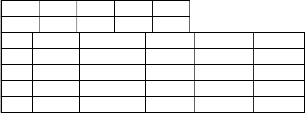
Table:4.1
p2 q1 q2 a b
0.4 0.5 0.6 0.2 0.3
p1 Mean Variance C.V ß1 ß2
0.1 0.69 0.037 0.277 0.072 3.077
0.2 0.71 0.033 0.255 0.08 3.973
0.3 0.73 0.029 0.231 0.046 5.518
0.4 0.75 0.023 0.204 0.013 8.668
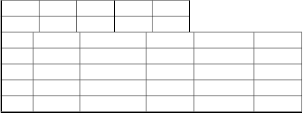
Table: 4.2
p2 q1 q2 a b
0.4 0.3 0.6 0.2 0.3
p1 Mean Variance C.V ß1 ß2
0.6 0.73 0.05 0.307 0.013 2.787
0.7 0.75 0.043 0.275 0.046 2.404
0.8 0.77 0.034 0.24 0.08 0.934
0.9 0.79 0.025 0.2 0.072 4.665
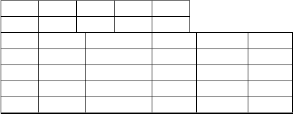
Table: 4.3
p1 q1 q2 a b
0.3 0.1 0.4 0.7 0.2
p2 Mean Variance C.V ß1 ß2
0.5 1.09 0.334 0.531 0.233 2.072
0.55 1.16 0.3 0.472 0.212 2.389
0.6 1.23 0.256 0.411 0.109 2.8
0.65 1.3 0.202 0.346 0.212 3.157
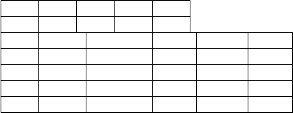
Table: 4.4
p1 q1 q2 a b
0.3 0.5 0.4 0.1 0.2
p2 Mean Variance C.V ß1 ß2
0.7 0.43 0.019 0.316 0.233 2.43
0.75 0.44 0.017 0.296 0.212 2.201
0.8 0.45 0.015 0.275 0.109 1.701
0.85 0.46 0.013 0.252 0.029 0.623
p1 p2 q1 a b
0.5 0.6 0.3 0.2 0.1
q2 Mean Variance C.V ß1 ß2
0.4 0.45 0.007 0.19 0.073 1.699
0.5 0.47 0.007 0.172 0.121 2.911
0.6 0.49 0.005 0.143 0.165 4.541
0.7 0.51 0.003 0.098 0.188 1.787
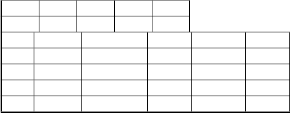

Table: 4.8
p1 p2 q1 a b
0.3 0.4 0.5 0.1 0.3
q2 Mean Variance C.V ß1 ß2
0.6 0.62 0.008 0.142 0.164 2.801
0.61 0.626 0.005 0.116 0.137 2.832
0.62 0.632 0.003 0.081 0.108 1

Table: 4.9
p1 p2 q1 q2 b
0.2 0.4 0.5 0.3 0.1
a Mean Variance C.V ß1 ß2
0.2 0.31 0.037 0.62 0.083 1.667
0.3 0.41 0.077 0.676 0.66 1.462
0.4 0.51 0.133 0.715 0.427 1.375
0.5 0.61 0.205 0.742 0.208 1.332
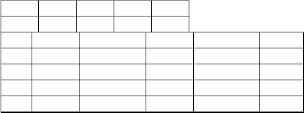
Table: 4.10
p1 p2 q1 q2 b
0.6 0.3 0.2 0.4 0.1
a Mean Variance C.V ß1 ß2
0.6 0.82 0.138 0.452 7.30E-02 2.6
0.7 0.94 0.184 0.457 6.50E-06 2.59
0.8 1.06 0.238 0.461 7.23E-03 2.583
0.9 1.18 0.3 0.464 0.023 2.578
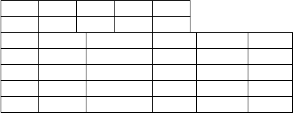
Table: 4.5
p1 p2 q2 a b
0.3 0.4 0.7 0.4 0.3
q1 Mean Variance C.V ß1 ß2
0.6 1.04 0.056 0.228 0.029 1.293
0.65 1.055 0.043 0.196 0.109 8.748
0.7 1.07 0.029 0.158 0.212 1.031
0.75 1.085 0.014 0.109 0.233 5.166
Table: 4.6
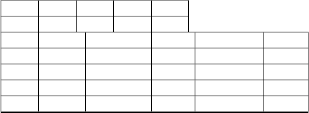
Table: 4.7
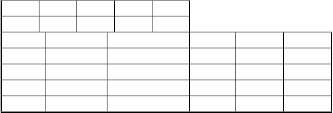
Table: 4.11
p1 p2 q1 q2 a
0.2 0.4 0.5 0.3 0.1
b Mean Variance C.V ß1 ß2
0.2 0.32 0.028 0.519 0.04 2.369
0.25 0.375 0.039 0.524 0.146 2.321
0.3 0.43 0.052 0.531 0.089 2.271
0.35 0.485 0.068 0.538 0.028 2.228
Table: 4.12
IJSER © 2012 http://www.ijser.org
The research paper published by IJSER journal is about Evaluation of Treatment’s Performance through Stochastic Model for Unorganized Drug Administrations 9
ISSN 2229-5518
In order to get the insights of the drug efficacy, a data is considered with inputs p1, p2, q1, q2, a and b. The outputs like average drug effectiveness, variability in the drug effectiveness, coefficient of variation, coefficient of Skewness, coefficient of kurtosis etc are calculated with software MATHCAD. The numerical data sets are placed in the tables from 4.1 to 4.12.
It is observed that average drug efficiency is an increasing function of p1 and it is positive, variance is a decreasing function, coefficient of variation is decreasing and beta2 is a decreasing function having negative impact when p1 < q1, p2 < q2, a < b and other parameters are constants. The average drug efficiency is an increasing function of p1 and it is positive, variance is a decreasing function, coefficient of variation is decreasing and beta2 is a decreasing function having positive impact when p1
>q1, p2 < q2, a < b and other parameters are
constants .
It is observed that mean efficiency is an increasing function of p1 and it is positive, variance is a decreasing function, coefficient of variation is decreasing and beta2 is a increasing function having positive impact when p1 > q1, p2 >q2, a > b and other parameters are constants. The average drug efficiency is an increasing function of p1 and it is positive, variance is a decreasing function, coefficient of variation is decreasing and beta2 is a
decreasing function having positive impact when p1
< q1, p2 > q2, a < b and other parameters are constants.
The average drug efficiency is an increasing function of p1 and it is positive, variance is a decreasing function, coefficient of variation is decreasing and beta2 is a decreasing function having negative impact when p1 < q1, p2 < q2, a > b and the other parameters are constants. The mean efficiency is an increasing function of p1 and it is positive, variance is a decreasing function, coefficient of variation is decreasing and beta2 is a decreasing function having positive impact when p1
> q1, p2 < q2, a > b and the other parameters are
constants.
It is observed that mean efficiency is an increasing function of p1 and it is positive, variance is a decreasing function, coefficient of variation is decreasing and beta2 is an increasing function having negative impact when p1 > q1, p2 >q2, a>b and the other parameters are constants. The average drug efficiency is an increasing function of p1 and it is positive, variance is a decreasing function, coefficient of variation is a decreasing function and beta2 is a decreasing function having positive impact when p1 > q1, p2 < q2, a<b and the other parameters are constants.
The average drug efficiency is an increasing function of p1 and it is positive, variance is a decreasing function, coefficient of variation is
decreasing and beta2 is a decreasing function
IJSER © 2012 http://www.ijser.org
The research paper published by IJSER journal is about Evaluation of Treatment’s Performance through Stochastic Model for Unorganized Drug Administrations 10
ISSN 2229-5518
having positive impact when p1<q1, p2 > q2, a >b and the other parameters are constants. The mean efficiency is an increasing function of p1 and it is positive, variance is an increasing function, coefficient of variation is an increasing function and beta2 is a decreasing function having positive impact when p1 >q1, p2<q2, a>b and the other parameters are constants.
The average drug efficiency is an increasing function of p1 and it is positive, variance is an increasing function, coefficient of variation is increasing function and beta2 is a decreasing function having positive impact when p1<q1, p2>q2, a<b and the other parameters are constants. The mean efficiency is an increasing function of p1 and it is positive, variance is an increasing function, coefficient of variation is increasing function and beta2 is a decreasing function having positive impact when p1 >q1, p2<q2, a>b and the other parameters are constants.
5. Summary and Conclusions:
Our study observed that the chance of having positive impact of the drug is giving an increasing impact on its average performance, decreasing impact on variability when p1 < q1, p2 < q2, a < b. The coefficient of variation is a decreasing function of performance of positive impact when p1 < q1, p2
< q2, a < b. Consistency of drug performance may
be increased by maintaining more positive impact than negative impact. The chance of having
negative impact of the drug is giving an decreasing
impact on its average performance, increasing impact in variability when p1<q1, p2 > q2, a >b . The coefficient of variation is a increasing function of performance of positive impact when p1 < q1, p2 > q2, a >b . The chance of having positive impact of the drug is giving an increasing impact on its average performance, increasing impact on variability when a>b. The coefficient of variation is a decreasing function of performance of positive impact when p1 < q1, p2 < q2, a < b . Consistency of drug performance may be increased by maintaining more positive impact than negative impact. This model will help the individual patients in quantification of the problem severity with drug misuse. Development of software to this model will assist in the health monitoring of self health care takers for their decision support systems. The scope for future work may be done with multinomial cases and may be extended to more contexts that are suitable.
References:
1. S.H.Daukes; “A Consideration of the various methods of drug administration” (1929); Post Graduate Medical Journal, Vol
5,No.49, October(1929);pp:1-7.
2. W.M. Gregory et.al; “ Using mathematical models to estimate drug resistance and treatment efficacy via CT scan measurements of tumour volume” (1990); Br. J. Cancer, 62, 671-675.
3. Kimura K et.al; “A method of evaluating drug efficacy by statistical analysis of healing speed of peptic ulcer” (1996); J Gastroenterol Hepatol. Vol. 10, 916-921.
IJSER © 2012 http://www.ijser.org
The research paper published by IJSER journal is about Evaluation of Treatment’s Performance through Stochastic Model for Unorganized Drug Administrations 11
ISSN 2229-5518
4. A.Swierniakk et.al; “Asymptotic properties of infinite dimensional drug resistance evolution” (1997); Proc ECC97
Brussels.TU-A-C-4,Cd-ROM.
5. J.Smieja.et.al; “Optimal Control for the model of drug resistance resulting from gene amplification” (1999);Prep.14th IFAC World Congress Beijing,China,Vol 1; pp:71-75.
6. W.E.Evans.H.L.McLeod;“Pharmacogenomi cs-drug disposition,drug targets and side effects” (2003), .New England J Med.Vol.348; pp:538-549.
7. C.Abad-Zapaatero and J.T.Metz; Ligand efficiency indices as guideposts for drug discovery (2005); Drug discovery today;10;pp:464-469
8. Csaba Hetenyi et.al; Structure-Based Calculation of drug efficiency indices”;Journal of structural Bioinformatics (2007); Vol .23;PP:2678-2685.
9. . Mattia C. F. Prosperi et.al; Stochastic modelling of genotypic drug-resistance for human immunodeficiency virus towards long-term combination therapy optimization; http://bioinfomatiocs.oxford journal s.orgVol. 25 no. 8, ( 2009), pages
1040–1047.
10. Tommi Tervonen; A stochastic multi-criteria model for evidence-based decision making
in drug benefit-risk analysis; Statistics in
Medicine(2009); www.sim.org.
11. Khalili .S et.al0); “Development of a stochastic model for the efficacy of NRTIs using known mechanisms of action”; J Theor Biol. (2010); 265(4), pp: 704-17.
12. P.Tirupathi Rao, R. Bharathi; “Stochastic modeling in the evaluation of drug efficiency”; International Journal of Statistics and System; Vol
5,No.3(2010);pp:427-438.
13. P.Tirupathi Rao, M.Venkateswaran, R.Vishnu Vardhan; “Stochastic Modeling on Drug efficacy in self Drug administration Health Problems”; Journal of Service Science Management (2011); Vol.4, 491-
498.
IJSER © 2012 http://www.ijser.org













